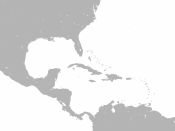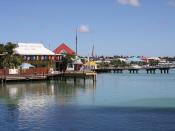THE PROBLEMS
-------------
The islands of the British West Indies saw foreign competition from the slave grown sugar of Louisiana and Cuba. However, by the 1860's, due to a loan from the British government, Trinidad, Antigua, Barbados, British Guiana and St. Kitts all survived the equalization crisis. The sugar industry in Jamaica, on the other hand, continued to deteriorate.
Jamaica's figures show a sugar industry, which failed to survive. Below is proof of this failure and decrease in sugar production. As the 19th century progressed, the production of sugar decreased greatly.
ÃÂ1832 - 71,000 tonnes
ÃÂ1852 - 25,000 tonnes
ÃÂ1888 - 13,000 tonnes
The abolition of slavery caused a decrease in the manual labor. The price of slaves in the internal market rose, and the only way to combat this was to raise the price of sugar. Emancipation just made the situation worse. There was virulent competition from Indian and East Indian sugar.
Before this, West Indian planters were the only ones to enjoy low rates of duty on sugar. In Jamaica there was too little space and too many plots of used and weary land for sugar to be planted and cultivated successfully. When compared to Jamaica, Cuba had virgin land, it was ten times larger than Jamaica, had a better water source and power. There was also a longer period of time designated to slavery in Cuba. Therefore, the labor force of Cuba lasted until the year 1886, fifty years after the British West Indies had emancipated their slaves.
Cuba also had immigrant labor, machines and then - modern technology, refined sugar and a better relationship with the world - wide market. This Spanish colony had a friendly relationship with the United States of America. To put it in simpler terms, Jamaica just did not stand a...



Well done.
I'm glad to see you in the top ten as you've contributed some very good work. In this case I would ask again for your sources and add that I thought your conclusion came to an abrupt end, such as it was.
1 out of 3 people found this comment useful.